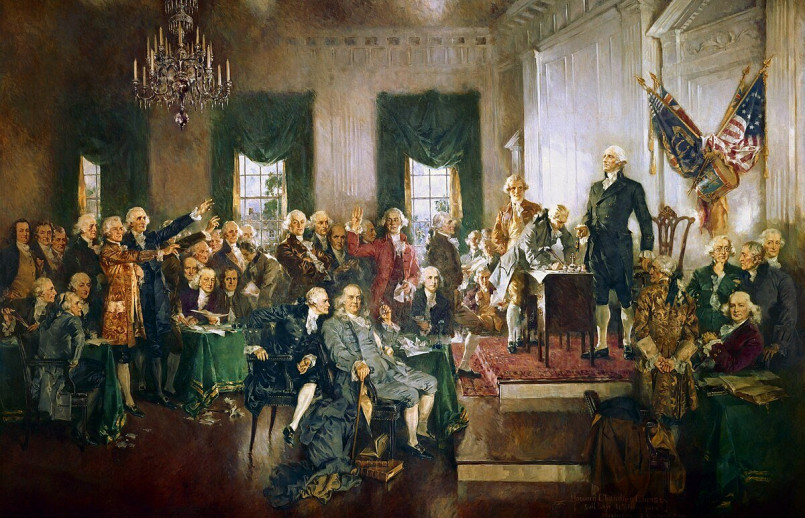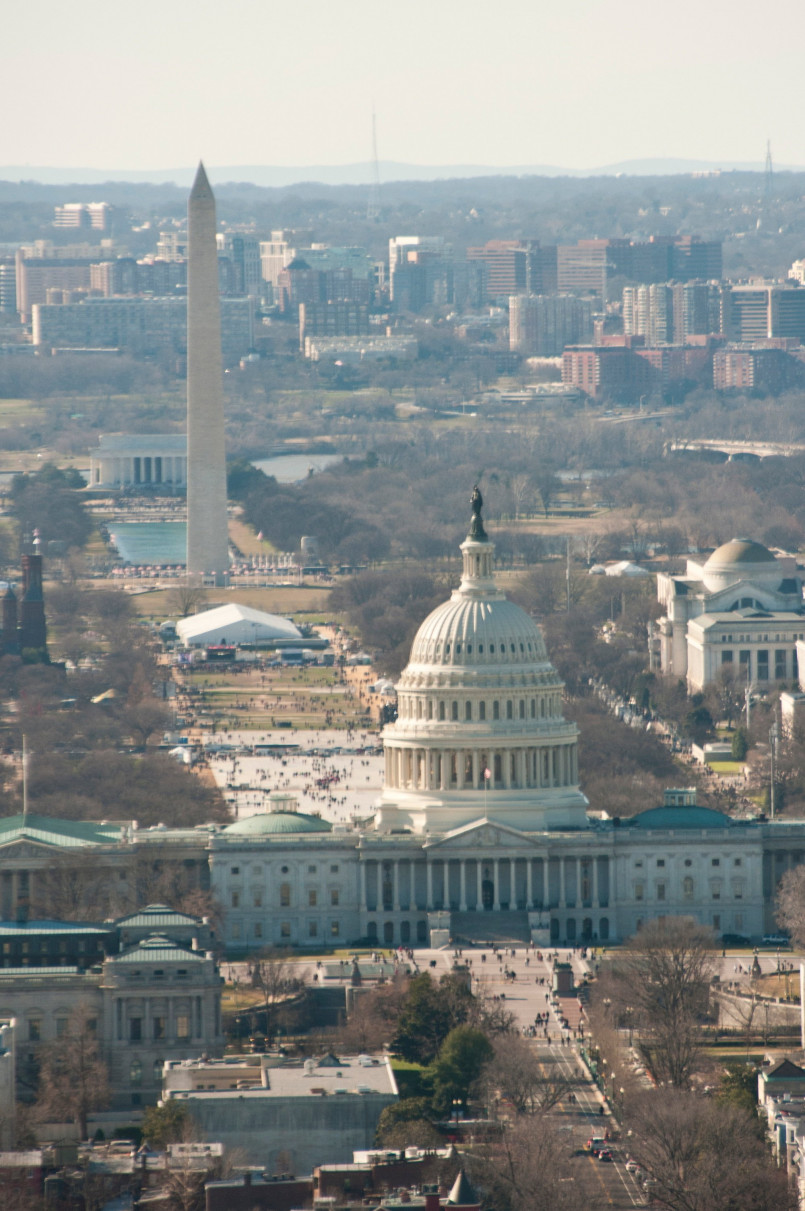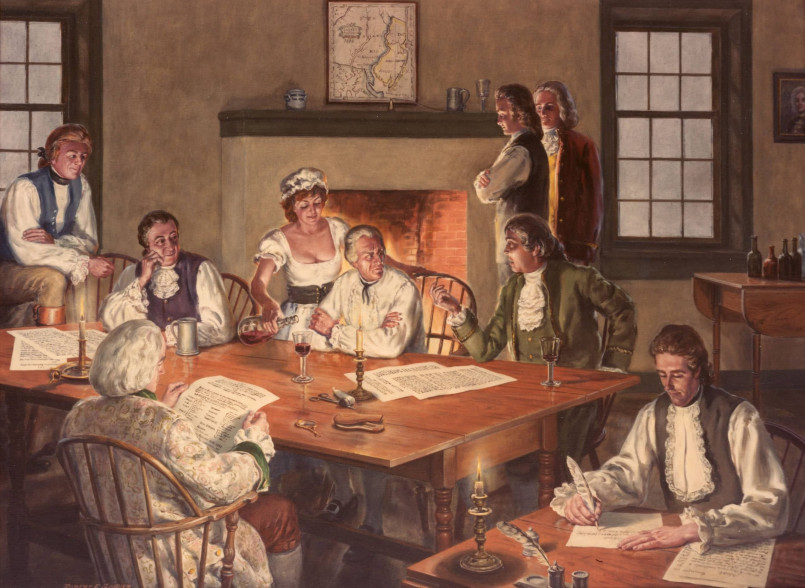Despite having just a fraction of the U.S. population, states like Wyoming and Vermont wield the same Senate voting power as California and Texas. This constitutional feature creates a significant imbalance in representation that shapes American politics in profound ways.
In the halls of the United States Capitol, a mathematical anomaly shapes American democracy every day. While the House of Representatives allocates seats based on population, the Senate operates on a fundamentally different principle: equal representation regardless of size. This constitutional design grants Wyoming's 580,000 residents the same senatorial power as California's 39 million, creating one of the most consequential imbalances in American governance.
This senatorial equality wasn't an oversight but a deliberate constitutional compromise. Today, it means citizens of small states effectively have substantially more influence over national legislation, judicial appointments, and even presidential impeachments than residents of larger states. This arrangement has far-reaching implications for everything from federal spending to climate policy.
Equal Representation by Design: The Great Compromise
The equal representation of states in the Senate wasn't accidental. It emerged from the 1787 Constitutional Convention as part of the "Great Compromise" (also called the Connecticut Compromise) between large and small states. Small states feared being overwhelmed in a purely population-based legislature, while large states wanted representation proportional to their size.
The solution created a bicameral legislature: the House with proportional representation and the Senate with equal representation-two senators per state regardless of population. This compromise was so fundamental to the Constitution's adoption that it received special protection in Article V, which states that "no State, without its Consent, shall be deprived of its equal Suffrage in the Senate."
James Madison, though generally favoring proportional representation, acknowledged the necessity of this arrangement, writing in Federalist No. 62 that it gave "to the smaller States an effectual defensive power against the larger."

The Population Imbalance: Numbers Don't Lie
The population disparity between states has grown dramatically since the founding era. In 1790, Virginia (the largest state) had roughly 12 times the population of Delaware (the smallest). Today, California has nearly 70 times Wyoming's population.
This means a Wyoming resident effectively has 70 times more influence in the Senate than a Californian. The 26 smallest states-enough to form a Senate majority-represent just 18% of the American population. This mathematical reality creates a situation where a determined minority of the population can control Senate outcomes.
Some stark examples illustrate this imbalance:
- The combined population of the 20 smallest states (approximately 34 million) is less than California alone (39 million), yet those states command 40 Senate votes to California's 2
- The six smallest states (Wyoming, Vermont, Alaska, North Dakota, South Dakota, and Delaware) have a combined population smaller than Connecticut but hold 12 Senate seats
- A majority of Senate votes can be assembled from states representing just 16.2% of the total U.S. population
Practical Impacts of Senatorial Imbalance
The Senate's equal representation principle influences American governance in numerous ways. The chamber holds unique constitutional powers that amplify small states' influence:
Confirmation Authority: The Senate alone confirms federal judges, Supreme Court justices, Cabinet officials, and ambassadors. This gives small states disproportionate influence over the judiciary and executive branch composition.
Treaty Ratification: International treaties require a two-thirds Senate vote for ratification, meaning states representing a small fraction of Americans can block international agreements that may have broad national support.
Impeachment Trials: While the House impeaches, the Senate tries impeachment cases, requiring a two-thirds majority to convict. This high threshold, combined with the Senate's structure, makes conviction extremely difficult.
Filibuster Power: The Senate's tradition of allowing extended debate (the filibuster) means legislation effectively requires 60 votes to pass. This gives even greater power to small state coalitions to block legislation.
The Federal Funding Advantage
Small states often receive disproportionately more federal funding per capita than larger states-a direct result of their outsized Senate representation. Senators advocate for their states' interests, directing federal dollars to local projects, institutions, and programs.
Research consistently shows this financial advantage. A study by the Brookings Institution found that states with the fewest people typically receive more federal spending per person. For example:
- Alaska, North Dakota, and Vermont consistently rank among the top recipients of federal funding per capita
- Federal highway funding formulas include minimum allocations that benefit small states
- Agricultural subsidies disproportionately benefit rural states with small populations
- Military bases and federal facilities are often located in smaller states partly due to senatorial influence
This funding advantage creates a feedback loop that reinforces small state power-federal resources flow to these states, strengthening their economies and institutions despite their smaller tax base.
Small State Policy Veto Power
On numerous policy issues, the Senate's structure has allowed small states to effectively block legislation that enjoys majority support nationwide. Climate change legislation offers a clear example: states with fossil fuel industries but small populations can exert outsized influence on national environmental policy.
Gun control provides another illustration. States with rural traditions of gun ownership but relatively small populations have successfully opposed measures that polling suggests most Americans support. The Senate's structure gives these states effective veto power over such legislation.
Similar dynamics affect immigration reform, healthcare policy, and financial regulation. The result is a system where national policy often reflects small state priorities more than overall population preferences.

Historical Evolution of the Imbalance
The Senate's representational imbalance has grown over time. When the Constitution was ratified, population disparities between states were much smaller. The admission of new states and demographic shifts have dramatically increased the disparity.
Westward expansion created numerous small states that received equal Senate representation. The 1960s and 1970s saw population shifts toward "Sun Belt" states, while rural states often experienced stagnant or declining populations. Immigration patterns have concentrated population growth in specific states, further exacerbating representation differences.
Urbanization has also played a role. As Americans increasingly concentrate in major metropolitan areas, often in coastal states, the population discrepancy between the largest and smallest states continues to grow.
Reform Proposals and Constitutional Barriers
Various reform proposals have emerged to address the Senate's representational imbalance:
- D.C. and Puerto Rico Statehood: Adding new states could potentially shift Senate dynamics, though this would not fundamentally alter the structural imbalance
- Senate Reapportionment: Some have proposed giving larger states additional senators, though this would require constitutional amendment
- Diminished Senate Powers: Transferring some Senate authority to the more proportionally representative House
- National Popular Vote Movement: While focused on presidential elections, this reflects similar concerns about disproportionate influence
However, Article V of the Constitution creates a nearly insurmountable barrier to Senate reform by requiring state consent to changes in equal representation. This means any meaningful reform would need support from the very states that benefit from the current arrangement.
The debate over Senate representation reflects a fundamental tension in American democracy: should governance prioritize individual citizen equality or maintain a federal system that preserves state identity regardless of population? This question continues to shape American politics, with no easy resolution in sight.
Frequently Asked Questions About Why Small States Wield Disproportionate Power in the U.S. Senate - Constitutional Imbalance Explained
Why does the U.S. Senate give equal representation to all states?
The Senate's equal representation was part of the Great Compromise at the 1787 Constitutional Convention. Small states feared being dominated in a purely population-based legislature, so the framers created a bicameral system with the House based on population and the Senate giving each state equal voice. This compromise was essential to getting smaller states to ratify the Constitution.
How much more Senate voting power does a Wyoming resident have compared to a California resident?
A Wyoming resident has approximately 67 times more voting power in the Senate than a California resident. Wyoming has about 580,000 residents represented by two senators, while California has 39 million people also represented by just two senators. This means each Wyoming senator represents about 290,000 people, while each California senator represents 19.5 million.
Could the Senate ever be reformed to provide more proportional representation?
Constitutional reform of the Senate would be extremely difficult. Article V of the Constitution states that "no State, without its Consent, shall be deprived of its equal Suffrage in the Senate." This means smaller states would have to voluntarily give up their advantageous position. Additionally, any constitutional amendment requires ratification by three-fourths of state legislatures, giving small states multiple ways to block changes.
Do small states receive more federal funding because of their Senate representation?
Yes, studies consistently show that smaller states typically receive more federal funding per capita than larger states. This is partially due to their disproportionate Senate representation, which allows their senators to advocate effectively for federal projects, installations, and funding. Many federal funding formulas also include minimum allocations that benefit small states regardless of population.
Has the population imbalance between states grown worse over time?
Yes, the population disparity has grown dramatically. When the Constitution was ratified, the largest state (Virginia) had roughly 12 times the population of the smallest (Delaware). Today, California has nearly 70 times Wyoming's population. Urbanization, immigration patterns, and internal migration have concentrated more Americans in a smaller number of states, exacerbating the representational imbalance.
What specific Senate powers amplify small states' influence?
Small states gain outsized influence through the Senate's exclusive powers to confirm federal judges and Supreme Court justices, approve Cabinet appointments, ratify treaties (requiring a two-thirds majority), conduct impeachment trials, and block legislation through the filibuster (effectively requiring 60 votes). These powers give small states significant leverage over judicial, executive, and legislative outcomes.






